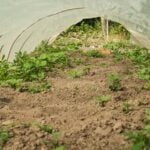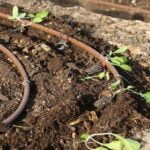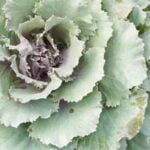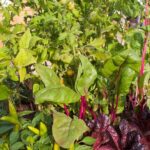Are you interested in starting your own vegetable garden but don’t have a lot of outdoor space? Wondering what vegetables are good for container gardening? You’re in the right place.
Container gardening is a great way to grow your own fresh produce, even if you only have a small balcony or patio. In this article, we’ll explore the benefits of growing vegetables in containers, how to choose the right containers, which vegetables thrive in containers, and tips for successful container gardening.
Container gardening has become increasingly popular, especially among urban dwellers and those with limited outdoor space. It offers an opportunity for anyone to experience the joy of growing their own food, regardless of their living situation. With the right knowledge and approach, container gardening can be just as rewarding as traditional gardening, if not more so.
One of the key advantages of container gardening is its flexibility and versatility. You can move your containers around to take advantage of the best sunlight, protect them from harsh weather conditions, and even bring them indoors during colder months. Plus, it’s a great option for beginners who may feel intimidated by larger-scale gardening projects.
Whether you’re a seasoned gardener or just starting out, there’s something truly special about cultivating and harvesting your own vegetables right at home. Keep reading to learn more about how you can get started with your own container vegetable garden.
Benefits of Growing Vegetables in Containers
Growing vegetables in containers offers a wide range of benefits, making it an attractive option for many gardeners. Some of the key advantages include:
- Space-saving: Container gardening is perfect for those with limited outdoor space or no access to a traditional garden plot. It allows you to grow vegetables on a balcony, patio, or even indoors.
- Portability: Containers can be moved around easily, which means you can position them to receive optimal sunlight and shelter them from harsh weather conditions.
- Weed and pest control: Container gardening can help reduce the risk of weeds taking over your vegetable plants, and it also makes it easier to spot and manage any pests that may appear.
In addition to these practical benefits, growing vegetables in containers can also be visually appealing. You can choose stylish pots and arrange them creatively to enhance the aesthetic appeal of your outdoor living space.
Moreover, container gardening allows for better control over the soil quality and drainage, which is particularly beneficial for those living in areas with poor soil conditions. This results in healthier plants and higher yields, providing fresh produce right at your fingertips. Whether you’re a novice gardener or an experienced green thumb, the convenience and flexibility of container gardening make it an excellent choice for cultivating your favorite vegetables.
Choosing the Right Container for Vegetable Gardening
When it comes to container gardening, choosing the right containers for your vegetables is crucial for their growth and overall health. There are several options to consider when selecting containers for vegetable gardening, including plastic, terracotta, ceramic, and wood. Each type of container has its pros and cons, so it’s important to choose the best one for your specific gardening needs.
Plastic containers are popular because they are lightweight and durable. They also retain moisture well and come in a variety of sizes and shapes. Terracotta and ceramic pots are breathable, which helps prevent soil from becoming waterlogged. However, these types of containers can be heavy and may crack in freezing temperatures. Wooden containers are another option, but they tend to deteriorate over time due to moisture and rot.
Regardless of the material you choose for your vegetable containers, make sure that they have proper drainage holes at the bottom. Good drainage is essential to prevent waterlogging, which can lead to root rot in vegetable plants. Additionally, consider the size of the container based on the specific type of vegetable you plan to grow. Some vegetables require more space for their root systems to develop properly.
In addition to considering material and size, you should also take into account the location where you plan to place your containers. If your vegetable garden will be on a balcony or patio with limited space, you may want to opt for smaller or stackable containers that can maximize growing space without taking up too much room. Ultimately, choosing the right container for your vegetable gardening needs will contribute significantly to the success of your container garden.
Best Vegetables for Container Gardening
When it comes to choosing the best vegetables for container gardening, it’s important to select varieties that are well-suited for growing in a confined space. Some vegetables thrive in containers, making them ideal choices for those who want to grow their own produce but have limited outdoor space.
One of the best vegetables for container gardening is cherry tomatoes. These small, sweet tomatoes can be grown in hanging baskets or large pots and do not require as much space as traditional tomato plants. Additionally, leafy greens such as lettuce, spinach, and kale are great options for container gardening. They have shallow roots and can be harvested continually throughout the growing season.
Another popular choice is peppers, which can be successfully grown in containers. Bell peppers, banana peppers, and chili peppers all do well in pots as long as they receive plenty of sunlight and warmth. Additionally, herbs like basil, parsley, and mint are perfect for container gardening because they don’t require a lot of space to flourish.
Overall, there is a wide variety of vegetables that are suitable for container gardening. By choosing the right plants and providing them with proper care and maintenance, anyone can enjoy a bountiful harvest of homegrown produce regardless of their living situation.
| Vegetable | Container Size |
|---|---|
| Cherry Tomatoes | 5-gallon pot or hanging basket |
| Lettuce | 8-12 inches deep planter box |
| Bell Peppers | 10-16 inch pot |
| Basil | 6-8 inch pot |
How to Prep the Soil for Container Gardening
When it comes to container gardening, one of the most important aspects to consider is the soil. The type of soil you use can greatly impact the success of your vegetable plants. Preparing the soil for container gardening involves choosing the right type of soil and ensuring it has the proper nutrients and drainage for healthy plant growth.
Choosing the Right Soil
When prepping the soil for container gardening, it’s essential to choose a high-quality potting mix that is specifically formulated for container plants. Avoid using garden soil, as it tends to become compacted in containers and may not provide adequate drainage. Look for a potting mix that contains a blend of materials such as peat moss, compost, vermiculite, or perlite. These components help retain moisture while also promoting good drainage.
Adding Nutrients
While potting mixes are designed to provide a good start for your plants, it’s important to supplement them with nutrients throughout the growing season. Consider incorporating slow-release fertilizer pellets into the soil at planting time to provide a steady supply of nutrients as your vegetables grow. Additionally, you can use liquid fertilizer on a regular basis to ensure that your container plants have access to all the necessary nutrients for healthy development.
Ensuring Proper Drainage
In addition to choosing the right soil and providing essential nutrients, proper drainage is vital for successful container gardening. Before planting your vegetables, make sure that each container has adequate drainage holes at the bottom to prevent waterlogging. It’s also helpful to place a layer of small rocks or broken pottery in the bottom of the container before adding soil to further promote drainage.
By taking the time to properly prepare the soil for your container vegetable garden, you will set your plants up for success and enjoy a bountiful harvest throughout the growing season.
Tips for Watering and Fertilizing Container Vegetable Gardens
When it comes to watering container vegetable gardens, it’s essential to be mindful of the plants’ water needs. The key is to keep the soil consistently moist but not waterlogged. This means checking the moisture level of the soil regularly and adjusting your watering schedule as needed. In general, most container vegetables will require watering at least once a day, especially during hot weather.
Fertilizing is also crucial for the successful growth of vegetables in containers. Since container soil can become depleted of nutrients more quickly than garden beds, it’s important to fertilize regularly. Using a balanced liquid fertilizer every 2-4 weeks or incorporating a slow-release granular fertilizer into the soil at planting time can help ensure that your container vegetables have access to the nutrients they need to thrive.
In addition to their regular watering and fertilizing needs, it’s essential to monitor your container vegetables for any signs of nutrient deficiencies or over-fertilization. Adjusting your feeding schedule or type of fertilizer used based on your plants’ specific needs can make a significant difference in their overall health and productivity.
| Tips for Watering | Tips for Fertilizing |
|---|---|
| Check soil moisture regularly | Use balanced liquid fertilizer every 2-4 weeks |
| Adjust watering schedule based on weather conditions | Incorporate slow-release granular fertilizer into soil at planting time |
| Be mindful of over-watering | Monitor plants for signs of nutrient deficiencies or over-fertilization |
Common Pests and Diseases in Container Gardening and How to Manage Them
When growing vegetables in containers, it’s important to be aware of the common pests and diseases that can affect your plants. One of the most common pests in container gardening is aphids, which are small insects that feed on plant sap and can cause damage to your vegetable plants.
To manage aphids, you can use insecticidal soap or neem oil to control their population. Another common pest is the whitefly, which can be managed with yellow sticky traps and by introducing natural predators such as ladybugs.
In addition to pests, container-grown vegetables are also susceptible to diseases such as powdery mildew, blight, and root rot. Powdery mildew is a fungal disease that appears as a white powdery coating on the leaves of plants.
To manage powdery mildew, you can use fungicidal sprays and ensure good air circulation around your plants. Blight, another common disease, causes wilting and browning of leaves and can be managed by removing affected plant parts and practicing good sanitation in your garden.
Root rot is a disease caused by overwatering or poorly draining soil in containers. To manage root rot, it’s important to ensure that your containers have proper drainage holes and that you allow the soil to dry out between watering sessions. By being proactive in managing pests and diseases in your container garden, you can enjoy a healthy harvest of vegetables throughout the growing season.
Harvesting and Enjoying Your Container-Grown Vegetables
Container gardening offers the opportunity to grow an abundance of fresh vegetables, even in limited space. Once your vegetables are ready for harvest, it’s time to enjoy the fruits of your labor. When it comes to harvesting and enjoying your container-grown vegetables, there are a few things to keep in mind to ensure that you get the most out of your home-grown produce.
Knowing When to Harvest
Different vegetables have different indicators that they are ready for harvest. For example, tomatoes should be picked when they are fully colored and firm, while leafy greens like lettuce and spinach can be harvested when they reach a desired size. By familiarizing yourself with the specific characteristics of each vegetable you are growing, you will be able to determine the optimal time for harvesting.
Harvesting Techniques
Some vegetables can simply be plucked from the plant by hand, while others may require cutting with scissors or pruning shears. It’s important to use gentle techniques when harvesting so as not to damage the plant or disturb its surrounding roots. For root vegetables such as radishes and carrots, gently loosen the soil around them before pulling them out.
Enjoying Your Homegrown Produce
One of the greatest joys of container gardening is being able to enjoy fresh vegetables right from your own home. Whether you’re using them in salads, cooking them into delicious dishes, or sharing them with friends and neighbors, there’s nothing quite like savoring the fruits of your gardening efforts.
The flavor and satisfaction that come with eating homegrown produce make all the hard work worthwhile. So get creative with how you use your freshly harvested container-grown vegetables and relish in their natural goodness.
Conclusion
In conclusion, container gardening offers a convenient and rewarding way to grow vegetables even with limited space. The benefits of growing vegetables in containers are numerous, including the ability to control soil quality, easy maintenance, and the opportunity to enjoy fresh produce right at your doorstep. By choosing the right container and selecting the best vegetables for container gardening, anyone can experience the joy of harvesting and enjoying their own home-grown vegetables.
Prepping the soil and proper watering and fertilizing techniques are crucial for successful container gardening. These steps ensure that your vegetable plants receive the nutrients they need to thrive and produce a bountiful harvest. Additionally, being aware of common pests and diseases in container gardening will help you effectively manage any issues that may arise, protecting your precious plants from potential harm.
The satisfaction of watching your vegetables grow from seeds or seedlings to mature plants, followed by the reward of harvesting and enjoying the fruits of your labor, is truly unparalleled. Container gardening allows for people of all ages and living situations to experience this joy firsthand. So whether you have a small balcony or a sunny patio, consider giving container vegetable gardening a try – you might just discover a new passion while enjoying home-grown produce throughout the season.
Frequently Asked Questions
What Are the Best Vegetables to Grow in a Container?
The best vegetables to grow in a container are those that don’t require a lot of space for their roots and can thrive in a confined environment. Some great options include cherry tomatoes, lettuce, peppers, radishes, and green onions. These plants are small enough to fit in containers and are well-suited for urban or small-space gardening.
What Foods Are Good for Container Gardening?
When it comes to foods that are good for container gardening, there are several options to consider. Herbs like basil, cilantro, and rosemary are excellent choices for containers because they don’t need a lot of space and can be easily accessed for cooking.
Additionally, strawberries, dwarf fruit trees, and even some varieties of squashes can do well in containers if provided with the right conditions.
What Vegetables Can You Grow in a 5 Gallon Container?
There are several vegetables that can be successfully grown in a 5-gallon container. Some popular choices include carrots, beans, peas, and smaller varieties of eggplant or zucchini. With proper care and attention to watering and sunlight, these vegetables can thrive in a limited space and provide a bountiful harvest for container gardeners.

If you’re looking to get into vegetable gardening, or are just looking for some tips on how to make your current garden better, then you’ve come to the right place! My name is Ethel and I have been gardening for years. In this blog, I’m going to share with you some of my best tips on how to create a successful vegetable garden.





